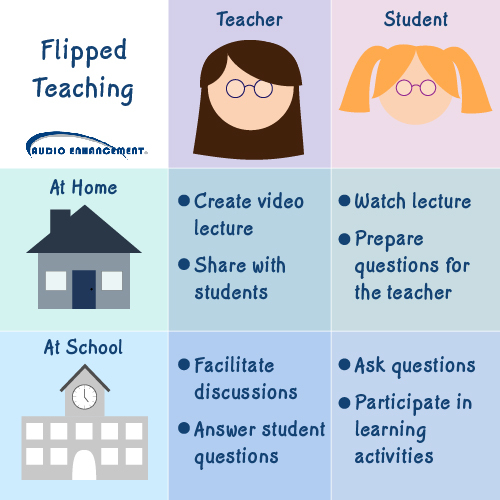e-Learning Ecologies MOOC’s Updates
Ubiquitous Learning: Flipped Classrooms
In the readings and videos thus far regarding flipped classrooms, the simplest definition seems to be that of finding new, particularly digital, ways of presenting content. An example from one of the videos suggested uploading a video lecture online rather than delivering the lecture in class. This is certainly ubiquitous learning because it frees up class time for other activities and affords students the freedom to view the video anytime/anywhere. This increases the student’s agency in their learning process because they can digest the content when and where they are most comfortable and attentive.
To take the concept further, I will share a definition of the flipped classroom from a previous professional development course I completed a few years ago. In this particular course, the concept went a little further with the definition of “flipped.” To flip the classroom means to reverse the traditional learning structure from teacher à student to student à teacher/peers.
Here is a link to the MaxKnowledge professional development course:
While this link does not provide access to the entire course, you can at least see the course structure and objectives for context.
Traditionally, the teacher might introduce and discuss new information on Monday. Classwork might involve reading through and discussing the textbook chapter containing this new information. The homework then might be to answer the comprehension questions at the end of the chapter, to be turned in on Tuesday for a grade.
In the flipped model, the teacher assigns the chapter reading over the weekend ahead of the Monday discussion, and asks the students to formulate their own questions about the material to bring to class for discussion. In this model, class time can be dedicated to having students work in small groups or in open discussion with the teacher about particular questions they have about the material. Ideally, flipping the content from the teacher dictating when and how the student receives the information, to the student taking control of when and how they receive the information essentially front-loads the discussion, making class time more productive because students can spend that time sharing with each other what they already know and having knowledge gaps filled in by the teacher and/or their peers – and vice versa – the students are helping to fill in knowledge gaps for their peers.
Here is a nice infographic from audioenhancement.com that I think sums up what I understand to be a flipped classroom model:



The idea of “flipped classroom” has many benefits. The main one that stands out to me is it allows students who struggle with understanding new, abstract concepts or who just need more time to process information the ability to read over the material first and then receive additional support for understanding through classroom discussions. I really like how you explained everything!